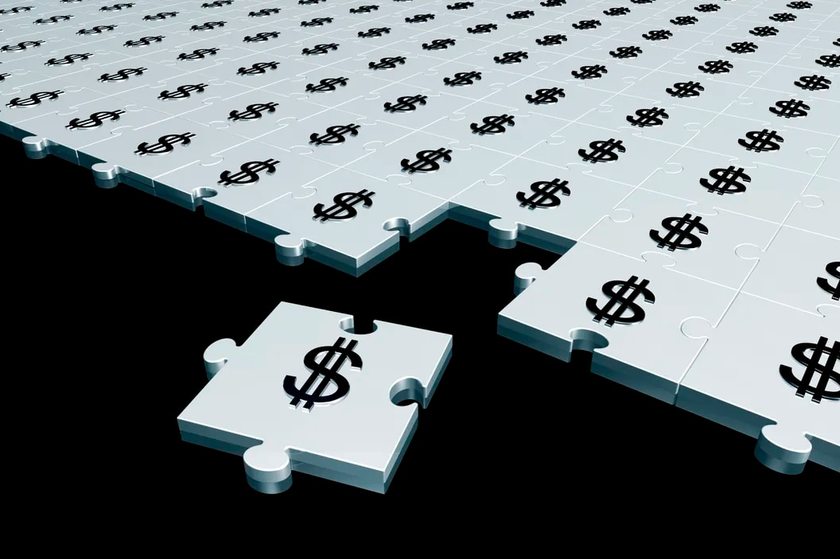This week in San Francisco I attended Circle Internet Financial’s star-studdedConverge conferenceand was struck by the wide array of projects working with its USDC stablecoin.
Participants included Latin America-based payments company Ripio, which is seeing surging demand for USDC transfers in Brazil and Argentina, or the Web3 service provider Recur, which solely accepts the stablecoin from users of its various metaverse worlds, including Star Trek Continuum.
It seems USDC, the second most-traded stablecoin, is developing its own “ecosystem,” a word (perhaps overused) that open-source advocates apply to networks of third-party developers and providers that build on a tech platform. Below I’ll get to a lesson I see here for U.S. lawmakers contemplating what digital form the dollar should take. But let’s first reflect on these ecosystem ideas as they pertain to a stablecoin like USDC. It’s not an obvious concept, though its implications are profound.
You’re readingMoney Reimagined, a weekly look at the technological, economic and social events and trends that are redefining our relationship with money and transforming the global financial system. Subscribe to get the full newsletterhere.
Let’s compare Converge to NEARCon, the annual conference sponsored by the Near Foundation I attended two weeks ago in Lisbon. It’s easier to understand that event as an “ecosystem conference.” Like other such gatherings –Ethereum’s Devconbeing a prime example – Near uses it to bring together andenergize the far-flung community of developersand companies building dapps and other services with smart contracts that run on its protocol.
USDC isn’t a smart contract protocol for dapps. It’s primarily a payment vehicle, conceived of by most people as a “coin.” It is a tokenized expression of dollar-based value that happens to be more fluid than non-digital dollars, one that can be exchanged peer-to-peer over public blockchains. (Circle’s launch on Wednesday ofa new cross-chain transfer protocol brings USDC a little closer to a more common definition of a crypto protocol, but it’s not why all those third-party, USDC-tied providers attended the event.)
Yet, as I see it, USDC is developing the mother of all protocols.
Money as protocol
When Fortune’s Jeff John Roberts asked Circle CEO Jeremy Allaire at a press conference on Wednesday to clarify what he meant by USDC as a “platform,” his two-part answer was instructive.
The first part focused on USDC’s application programming interface (API), which provides outside programmers open access to coding tools and data to ingest into their programs. That was consistent with the classic idea of a tech platform/protocol that encourages outside software development to grow overall value.
But then Allaire turned to the dollar itself, describing it as the established value “standard” for the internet. His idea was that the U.S. currency, now expressed in “programmable” form via USDC and other dollar-based stablecoins, can become its own “extensible platform.”
This got me thinking about the wider notion of “protocol” beyond its software-specific meaning. At their core, protocols are agreed sets of rules by which independent parties engage with each other. They provide a standardizing function vital to commerce and society generally. They are integral to civilization and come in many forms.
A language, for example, is a protocol. When two people converse using the English protocol, they tacitly agree that the objects they’re sitting on are “chairs.” But if they switch to Spanish, the seats are “sillas.” Neither word is right or wrong in a natural sense. They are made up. But by agreeing to commonly use the rule, we enable communication. (It’s no coincidence software code can be written in different “languages.”)
Money is also a made up concept. It’s an agreed reference for measuring and referencing a benchmark of value. In this sense, it is a protocol.
The dollar is the most successful value exchange protocol in history. And if, as Allaire says, that standard can flourish in an open-source, permissionless software environment, it will foster an explosion of new ideas and applications, along with massive value creation, just as the internet’s permissionless, global extensible platform did.
Yes, but …
Count me in as sold. I think this thesis is correct.
And it’s one U.S. lawmakers should seriously consider. When weighingcompeting proposals for regulating stablecoins, they must recognize that if they leave the development of digital dollars up to government, via a central bank digital currency (CBDC), they will get nowhere near the innovation and value creation that a global community of open-source developers will unleash with stablecoins. With the U.S. worried about losing a digital arms race to a Chinese-Russian alliance, it can spread U.S. interests by encouraging such an ecosystem.
But something that’s in the U.S. government’s interests is not necessarily in the world’s interest.
For one, as the activist and authorBrett Scottreminded me during a fireside chat at NEARCon, the global expansion of dollars equates to a loss of sovereignty in other places. Foreign local populations will lose control over their money supply, with credit conditions instead determined by Washington. One could argue that a hyper-dollarized financial internet is a form of U.S. digital colonialism.
And, while I agree with Allaire’s analysis of how to align U.S. interests with the latest financial innovations, we must be careful of putting too much power in the hands of a few private corporations like Circle. We made that mistake once with Web2.
Circle talks a good game in its lobbying efforts, encouraging open stablecoin competition, and I think we can take that, for now at least, in going ood faith. But as we’ve seen from how Google, Amazon, Facebook, et al. have doubled down on their extractive, privacy-abusing business models, despite a growing public outcry, any successful stablecoin company will face relentless profit-maximizing pressure from shareholders to carve out anti-competitive positions.
I think both of those problems can be addressed if U.S. lawmakers apply both an international approach and competition-promoting principles. Is there a model, for example, that allows communities outside the U.S. – be they national or local – to forge new tokenized expressions of value that give them agency over their resources and economic futures? (I’m particularly interested in nature-backed digital currenciessuch as those created by Single Earth to incentivize the protection of biodiversity and carbon sinks in developing countries.)
Also, to truly unleash the power of platform innovation with digital dollars, we must loosen the access constraints created byKnow Your Customer (KYC) and Anti-Money Laundering (AML) rulesand reduce U.S. banks’ transaction surveillance powers. Create freer access to dollars among the world’s financially excluded and amazing things will happen.
Circle’s vision contains the possibility of a radically redefined global financial system, overcoming the abuses of an incumbent one that’sincreasingly proving to be broken.But that vision must be framed within thoughtful, inclusive and human-first principles.



























